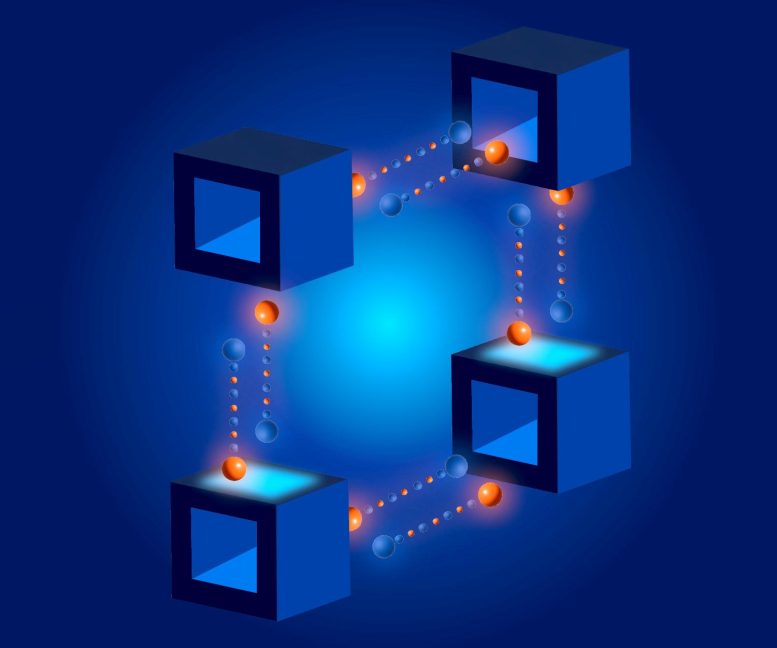
Researchers have developed a theoretical framework that provides deeper insights into quantum nonlocality, a vital property for quantum networks to outperform classical technology. Their study unified previous nonlocality research and showed that nonlocality is achievable only through a restricted set of quantum operations. This framework could aid in evaluating the quality of quantum networks and broaden our understanding of nonlocality.
Introduction and Overview
A new theoretical study has been conducted, providing a framework for understanding nonlocality. This is a crucial characteristic that quantum networks must exhibit to perform tasks unachievable by traditional communications technology. The researchers involved clarified the concept of nonlocality, outlining the conditions necessary for establishing systems with potent quantum correlations.
Nonlocality and Quantum Computing
Published in the journal Physical Review Letters, the study adapted techniques from quantum computing theory to form a novel classification scheme for quantum nonlocality. This adaptation not only enabled researchers to merge previous studies of the concept into a single framework, but also allowed them to prove that networked quantum systems can only exhibit nonlocality if they possess a specific set of quantum features.
Eric Chitambar, a professor of electrical and computer engineering at the University of Illinois Urbana-Champaign and the project lead, explained, “On the surface, quantum computing and nonlocality in quantum networks are different things, but our study shows that, in certain ways, they are two sides of the same coin. In particular, they require the same fundamental set of quantum operations to deliver effects that cannot be replicated with classical technology.”
The Consequence of Entanglement
Nonlocality is a consequence of entanglement, a process whereby quantum objects maintain strong connections even when separated by vast physical distances. When entangled objects are used in quantum operations, the results display statistical correlations that are inexplicable by non-quantum means. These correlations are described as being nonlocal. A quantum network must possess a degree of nonlocality to ensure its ability to perform truly quantum functions. However, this phenomenon remains inadequately understood.
Nonlocality as a Resource
To enhance the study of nonlocality, Chitambar and physics graduate student Amanda Gatto Lamas applied the formalism of quantum resource theory. They treated nonlocality as a “resource” to manage. This approach allowed them to view previous nonlocality studies as separate instances of the same concept, albeit with varying limitations on the resource’s availability. This strategy ultimately facilitated the proof of their main conclusion: nonlocality can only be achieved with a restricted set of quantum operations.
Understanding Quantum Networks
“Our result is the quantum network analogue to an important quantum computing result called the Gottesman-Knill theorem,” Gatto Lamas explained. “While Gottesman-Knill clearly defines what a quantum computer must do to surpass a classical one, we show that a quantum network must be constructed with a particular set of operations to do things that a standard communications network cannot.”
Future Applications and Insights
Chitambar is optimistic that this framework will serve as a tool for developing criteria to evaluate a quantum network’s quality based on its degree of nonlocality. Furthermore, he believes it can be used to broaden the understanding of nonlocality.
“Right now, there is a relatively good understanding of the type of nonlocality that can emerge between two parties,” he said. “However, one can imagine for a quantum network consisting of many connected parties that there might be some kind of global property that you can’t reduce to individual pairs on the network. Such a property might depend intimately on the network’s overall structure.”
Reference: “Multipartite Nonlocality in Clifford Networks” by Amanda Gatto Lamas and Eric Chitambar, 5 June 2023, Physical Review Letters.
DOI: 10.1103/PhysRevLett.130.240802
Chitambar is also a member of the Illinois Quantum Information Science and Technology Center. This study is the culmination of work started when Gatto Lamas was a participant in the Research Experience for Undergraduates program hosted by the U. of I. physics department.
Support was provided by the Q-NEXT program led by the U.S. Department of Energy’s Argonne National Laboratory.
Never miss a breakthrough: Join the SciTechDaily newsletter.
Follow us on Google and Google News.
1 Comment
According to the topological vortex gravitational field theory, the world is a whole of interaction and connection. Any physical phenomenon observed in scientific research will not be its entity. The Quantum Nonlocality is not an exception.